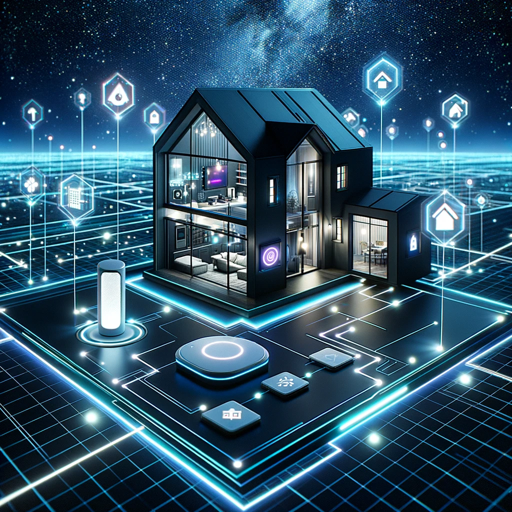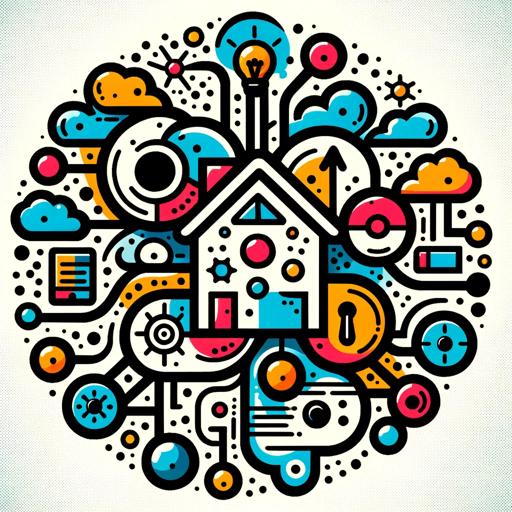Home Assistant-smart home control platform
AI-powered smart home automation
💡 Help me set up smart lighting in bedroom
📱 Build a custom dashboard for smart devices
🛏️ Automate routines for morning and bedtime
🧠 Teach me some useful skill or trick in Home Assistant
Related Tools
Load More
Home Assistant Assistant
Your go-to for comprehensive Home Assistant guidance. *NOT* officially associated with Nabu Casa or Home Assistant. Always Up-to-Date: Uses the latest Home Assistant documentation and best practices.

Firebase Assistant
Firebase Cloud Functions expert and guide.

HomeAssistant Helper
Your go-to source for all HomeAssistant updates and queries

Home Assistant Support
Helps with any Home assistant related queries (not affiliated to Nabu Casa)

Home Assistant Wizard
Easily create Home Assistant automations.

Smarthome GPT
Your guide to smart home tech: Home Assistant, HomeKit, Node-RED, n8n, and more.
20.0 / 5 (200 votes)
Introduction to Home Assistant
Home Assistant is an open-source home automation platform designed to centralize and streamline the control of smart home devices. It is built with the aim of creating a seamless integration between various smart devices and providing a unified interface to manage them. Home Assistant supports a wide range of devices from different manufacturers, allowing users to create customized automation rules and scenarios. For example, Home Assistant can be used to automate lighting based on occupancy and time of day, integrate security systems for monitoring and alerts, or manage climate control to maintain optimal comfort levels. It is highly flexible and can be extended through custom scripts and add-ons.

Main Functions of Home Assistant
Device Integration
Example
Connecting Philips Hue lights, Nest thermostat, and Sonos speakers into one system.
Scenario
A user can control and automate their smart lights, thermostat, and speakers from a single interface. For instance, setting up a 'Good Morning' automation that gradually turns on the lights, adjusts the thermostat to a comfortable temperature, and plays a morning playlist on the speakers.
Automation Rules
Example
Creating a rule to turn off all lights when no one is home.
Scenario
Using presence detection, Home Assistant can determine when all household members have left the house and automatically turn off all lights and non-essential devices to save energy. This enhances convenience and reduces energy consumption.
Voice Control Integration
Example
Integrating with Amazon Alexa or Google Assistant for voice commands.
Scenario
Users can control their home using voice commands. For example, asking Alexa to 'turn on the living room lights' or 'set the thermostat to 22 degrees'. This allows for hands-free control and accessibility.
Ideal Users of Home Assistant
Tech Enthusiasts and DIY Hobbyists
These users enjoy customizing and optimizing their home automation systems. They benefit from Home Assistant's flexibility and extensive compatibility with various devices, allowing them to create highly personalized automation setups.
Homeowners Seeking Convenience and Efficiency
Homeowners looking to simplify their daily routines and improve energy efficiency find Home Assistant invaluable. By automating tasks such as lighting, climate control, and security, they can enhance their home's functionality and reduce utility costs.

How to Use Home Assistant
Step 1
Visit aichatonline.org for a free trial without login, also no need for ChatGPT Plus.
Step 2
Install Home Assistant on a device, such as a Raspberry Pi or a dedicated server.
Step 3
Configure your Home Assistant instance by connecting to your home network and setting up your devices.
Step 4
Use the Home Assistant web interface or mobile app to create automations, monitor device statuses, and control your smart home devices.
Step 5
Explore the Home Assistant community for custom integrations, troubleshooting tips, and advanced usage scenarios.
Try other advanced and practical GPTs
Coupert
AI-Powered Savings and Cashback Tool

Mamacita GPT
Your AI-powered Latina amiga

ㆍArduino Expertㆍ
AI-powered Arduino development support

Power BI Expert
AI-powered data insights at your fingertips.

Redis Expert
AI-powered Redis assistance.

5chなんJスレッドメーカー【Z】
Generate 5ch-style threads with AI.

The CryptoSage
AI-powered cryptocurrency insights and analysis.

Orçamentos Rápidos da R3 Rental Car
AI-powered car rental quotes

GlitchB!tch2
Unleash Digital Chaos with AI Glitch

Solidity
AI-powered Solidity Developer

Marketing RRSS - Magenta Consultores
Empower Your Marketing with AI

Light Yagami
AI-Powered Intelligence for Your Needs

- Security Management
- Device Integration
- Energy Monitoring
- Home Control
- Voice Command
Home Assistant Q&A
What is Home Assistant?
Home Assistant is an open-source platform for automating and controlling smart home devices, offering extensive customization and integration options.
How do I add new devices to Home Assistant?
You can add new devices by navigating to the Integrations section in the Home Assistant web interface and selecting the appropriate integration for your device.
Can Home Assistant be used with voice assistants?
Yes, Home Assistant can integrate with voice assistants like Amazon Alexa and Google Assistant for voice control of your smart home devices.
Is Home Assistant secure?
Home Assistant places a strong emphasis on security and privacy. It supports encrypted connections and offers various security features to protect your data and devices.
What are automations in Home Assistant?
Automations in Home Assistant allow you to create rules and actions that are triggered by specific events or conditions, such as turning on lights when motion is detected.